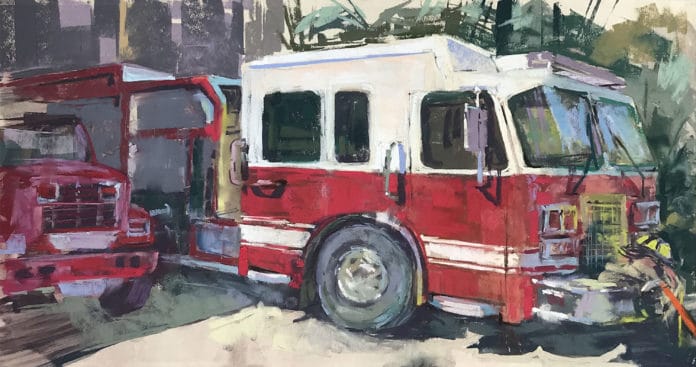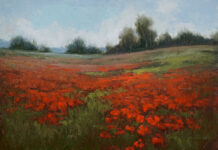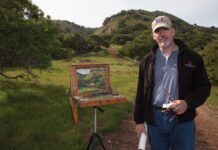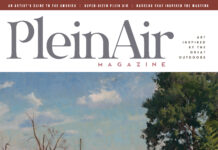A guest blog post by Nancie King Mertz on painting with pastels
Growing up as an oil painter, I would often go outside with my gear to paint, and in
college, I often painted the flat farmlands surrounding the University of Illinois while my
classmates were in-studio painting the expressive abstraction that was much preferred at
the time. In my art history classes, I don’t recall hearing the term “plein air” — I was
simply painting outside and loving it.
In 1988, shortly after my husband and I moved to Chicago, a friend gave me a set of
unwanted pastels, and I was hooked. They were easy to transport, offered brilliant color
without mixing, and gave immediate results. I’ve continued to work in both mediums,
but I’ve come to rely on painting with pastels more often for plein air, because of the speed. The very same pigment is used for both mediums — pastels are pure pigment compressed into stick form, and pure pigment with added oil becomes oil paint.
I’m sharing the images in this article to press the point of rapid results when painting with pastels. All were fully completed, en plein air, in less than two hours with pastel — a couple were quick-draw pieces in competitions, some were demos for a class or group, and one is a 20-minute pose with a model. Typically I prefer to complete a piece in one session, studio work included, because my enthusiasm is high, and the work has a fresher look.
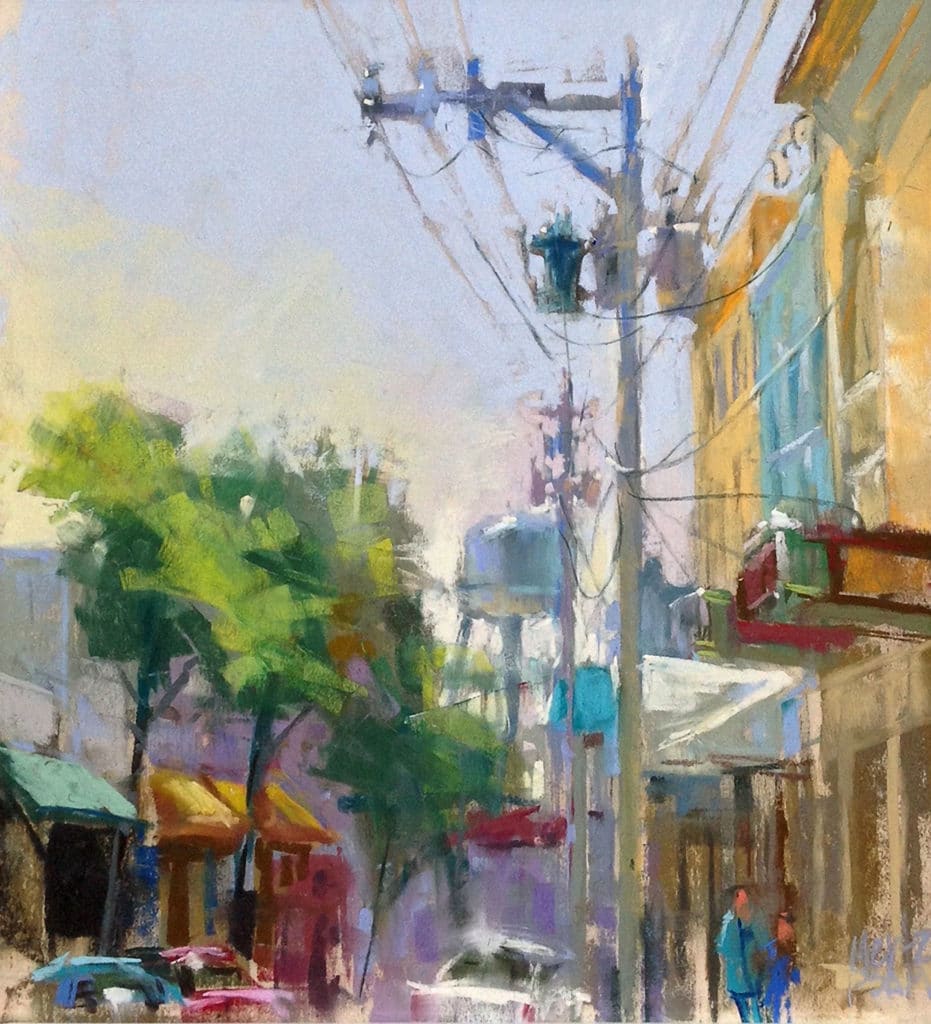
My preference is to work on a rigid medium-grit sanded surface, usually mounted UART paper. I begin with a vine charcoal “tic-mark-map,” which involves simply bumping the length of the charcoal onto the surface, creating directional lines for form and perspective. I don’t draw with the charcoal, but rather take 5 to 10 minutes to make tic-marks that enable me to get all that I want to include in the composition in place, from the start.
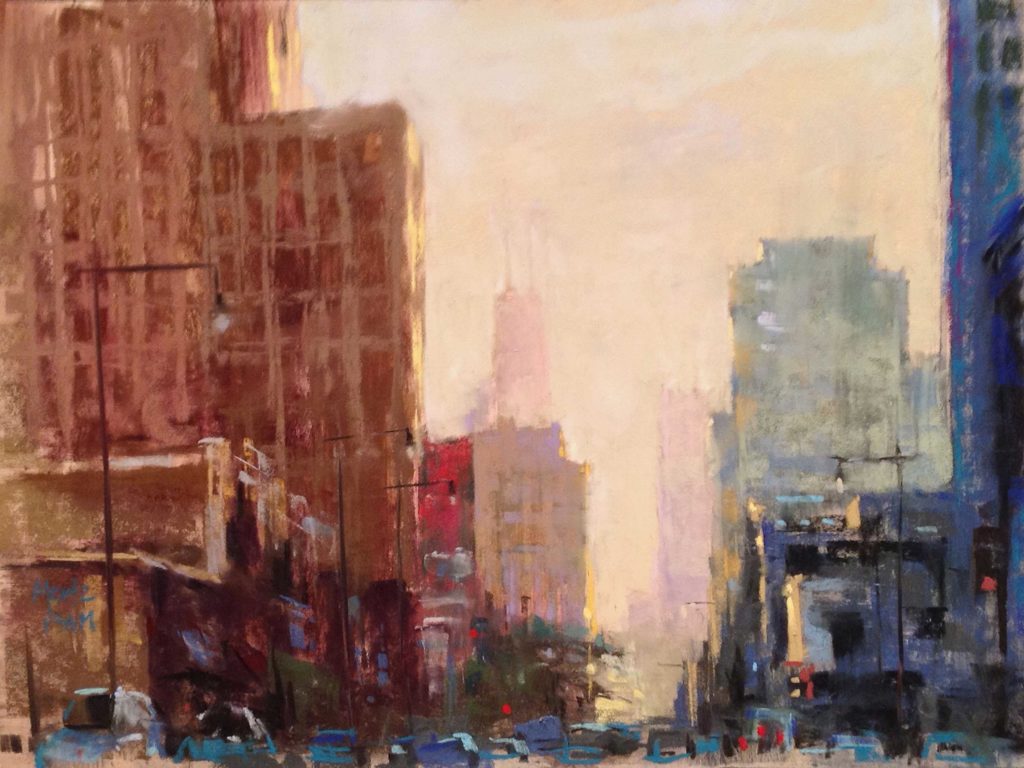
The various dark values are then applied with the side of the pastel stick using medium pressure, and once all the dark values are in place, I apply thin washes of denatured alcohol with a sturdy #6 Richeson Grey Matters fan brush. I “flick it” to give interesting brushwork that can remain visible. I let the pigment run and drip, which can also show at the end. And I use this initial brushwork to help define the direction of perspective in the piece, letting the brush do some of the work! Also, keeping the darks transparent is important so you can quickly overlay subsequent mid-to-light values.
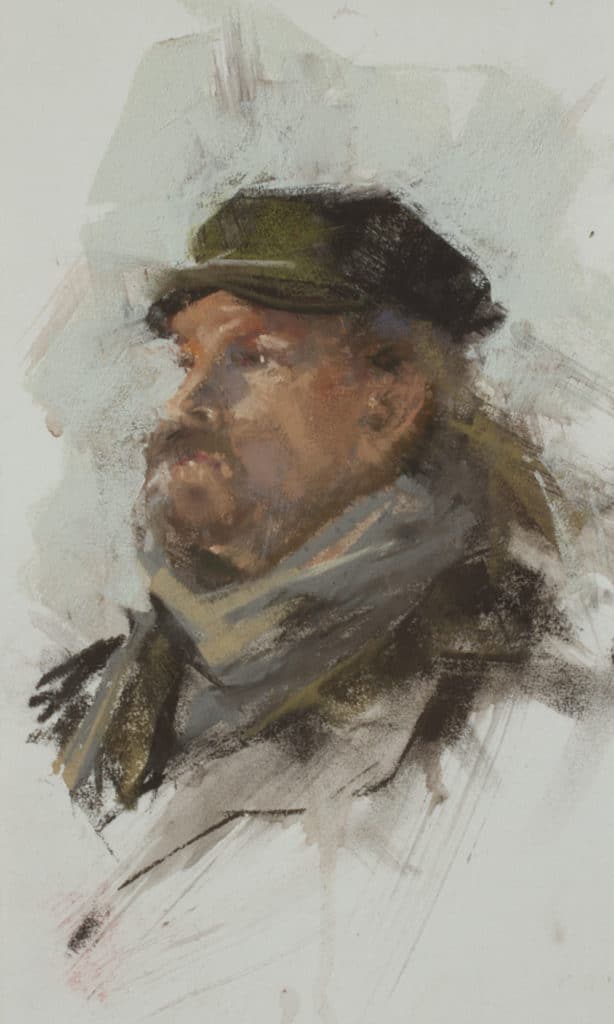
In my studio are many brands of pastels and oils, and I love them all for different reasons. However, for my plein air pastel setup, I use exclusively my two sets of Signature Jack Richeson pastels: Urban Landscape and Atmospheric Landscape. Each has 80 pieces that were hand-selected, and I have merged the two sets to have all the hues and values I need for plein air. In addition, I use a small selection of their hard pastels to help get into some detail, such as windows, branches, etc.
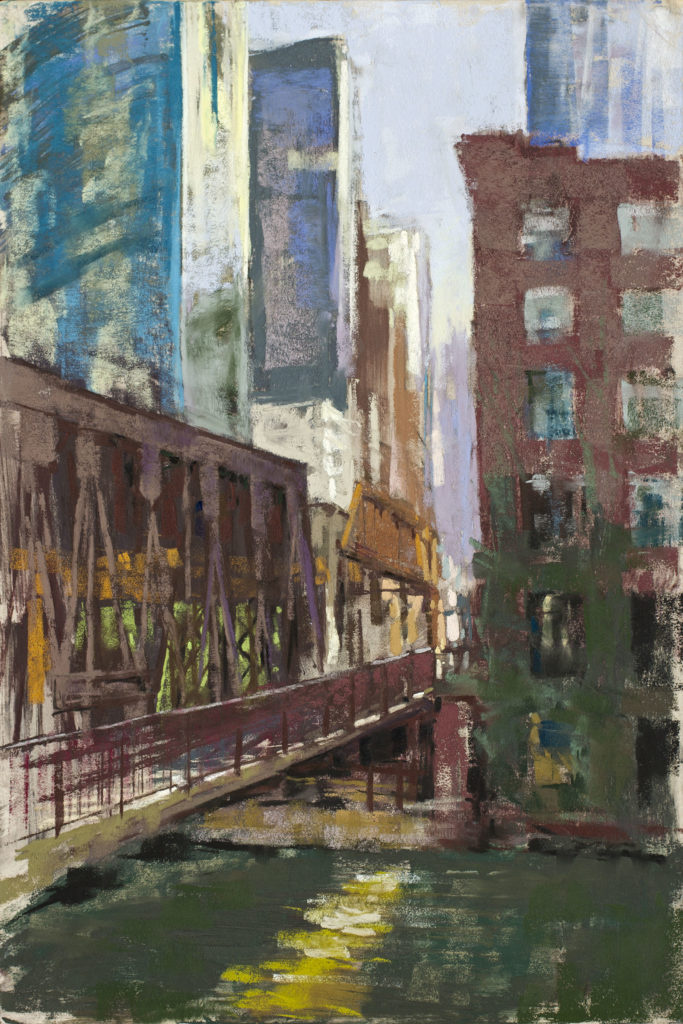
It’s my intent not to paint in each window, but to suggest them with shape and value shifts, letting the viewer settle into the piece without giving them too much information that can be boring.
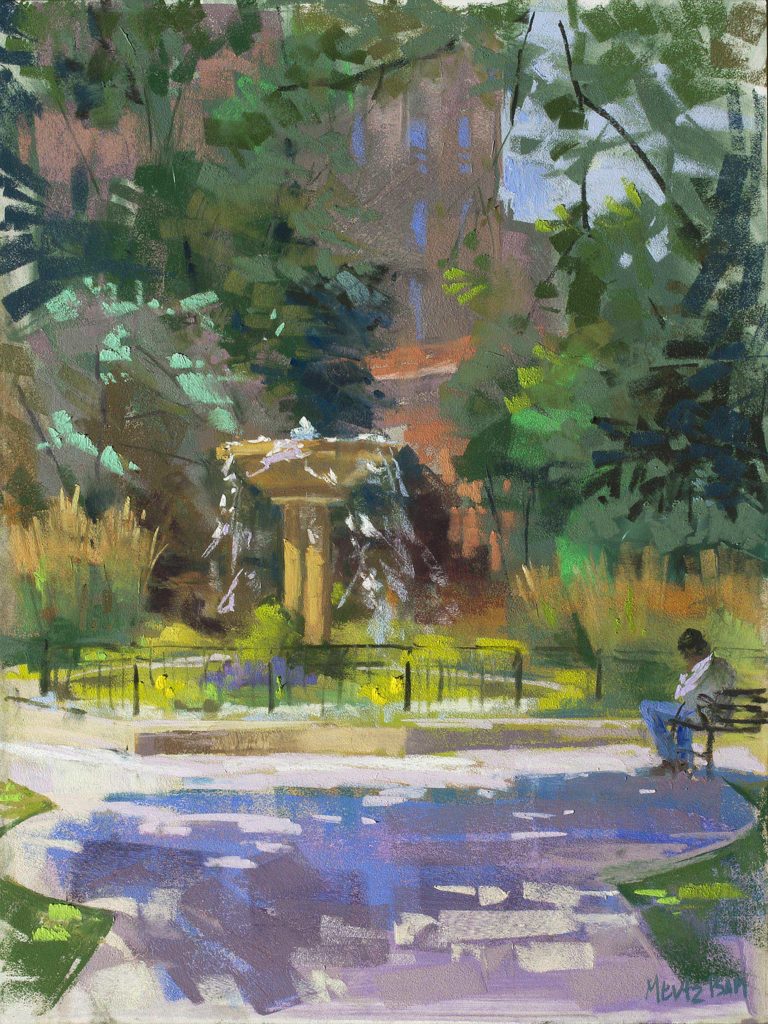
The distant windows are just visible, indicating the shape is a building but letting the eye rest on the more important elements in the foreground. Often painters make those distant windows dark—even black—and they pop right to the front.
If I leave town for even an overnight, I have my painting gear with me — who knows when a painting opportunity will arise? As we waited for a ferry to take us across the sea from Venice to Croatia last fall (I taught a pastel workshop there!), I used our brief wait time to paint a view of Venice I had not seen. The piece was small, and I worked quickly, not wanting to waste a minute in the magical city of Venice.
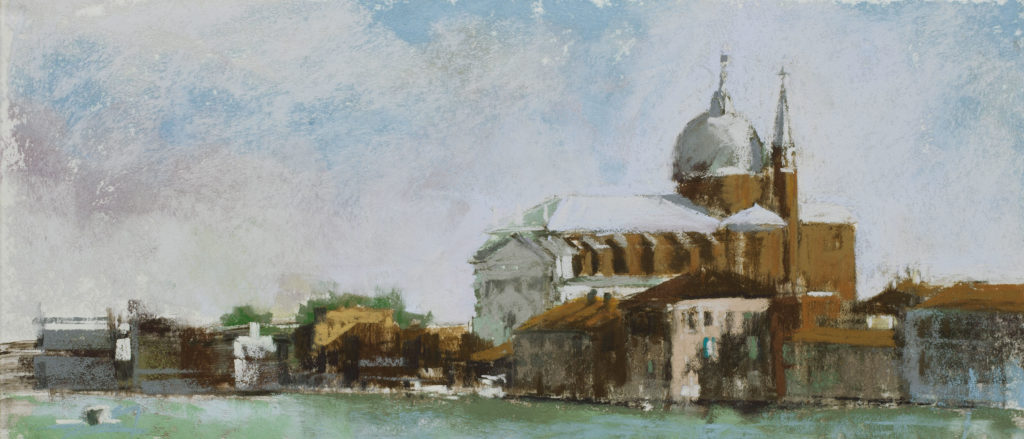
My setup is so lightweight, simple, and contained that quick setup is the norm for me. Attached to my camera tripod with a quick release is a table I made from Coroplast and duct tape that fits both of my pastel sets perfectly. My pastels are nestled in their original boxes (both identical in size), and heavy rubber bands secure them each to the table when not in use. A freestanding lightweight telescopic easel holds my panels, and all but the panels slide right into my rolling cart. I have a shoulder tote that holds the panels and finished paintings. I place all in the overhead bin when I fly (the alcohol is sealed in my checked bag), and I’m ready to go with my gear when I land, or drive, or take the train or bus!
Often I enjoy taking a break from the urban and architectural, and have fun painting floral or bright landscape. As always, I use the “tic-mark-map” to quickly lay out the composition, wash in the darks, build up with the midtones and slather on the color and light. It’s important to work dark to light, just as in oil painting, to keep the color fresh. Applying darks over lights often can result in mud.
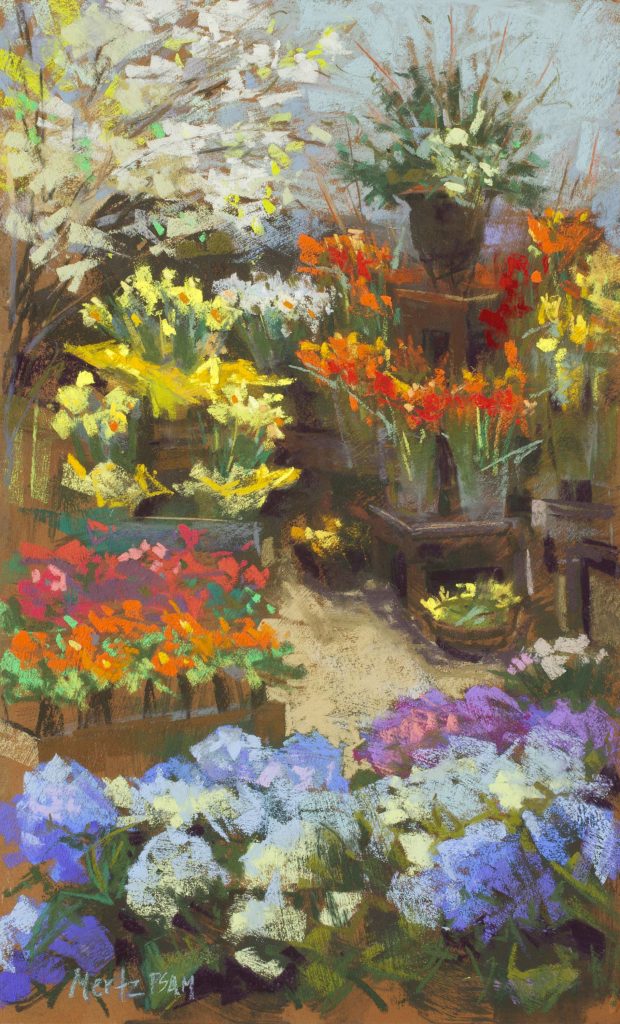
My most recent quick-draw piece was completed in May at Florida’s Forgotten Coast Invitational. I’ve been a regular there for seven years and have painted beaches and palms at this site many times. I wanted to tackle a different subject, so I had fun painting the local volunteer fire truck. My point is to choose a subject that moves you — that speaks to you in a different way. I often tell my students, “To help your work grow, paint what scares you!”
If you’re ready to learn more about how to paint with pastels, click here to order a copy of my video, “Urban Pastel Painting,” which can help you paint an urban scene, step by step.
***
Editor’s Note: Go from feeling afraid to show off your pastel paintings to being proud of your skills in just three days. Join us at Pastel Live, the world’s largest online art training event, August 17-19, 2023!

